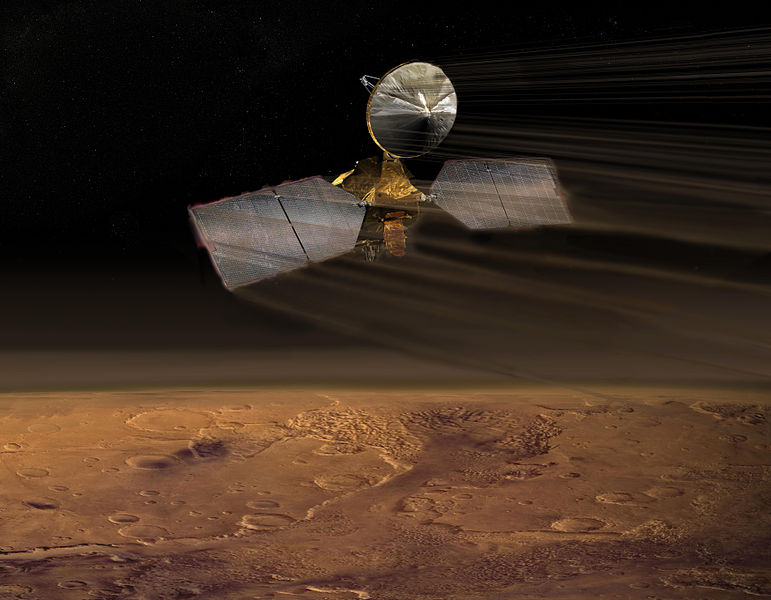10 years of the Mars Reconnaissance Orbiter mission

Last week, the 10th anniversary of the Mars Reconnaissance Orbiter (MRO) mission , a universal orbital instrument made for a close examination of the Red Planet, was celebrated . The mission’s start is considered to be the launch of the device from the Earth on August 12, 2005. And on March 10, 2006 the device entered the calculated orbit around Mars.
Since then, he has been continuously exploring the most interesting places of Mars with the help of three optical camera telescopes, two spectrometers, and other instruments directed down to the surface of the planet. Rotating in a circular orbit at an altitude of about 300 km, it constantly scans the surface of Mars and produces images with detail up to 25 cm per pixel.

MRO solar panel
It was with its help that the future landing site was selected and studied in detailCuriosity rover , who arrived there six years after the MRO, is Gale Crater. This is an impact crater named after Walter Frederick Gale, an amateur astronomer who observed Mars at the end of the 19th century and described channels on it. Gale Crater is notable for its vast elevation around the central peak. Perhaps the rocks that make up this hill have accumulated over about 2 billion years. The origin of this object is unknown - some researchers claim that this is the remnant of eroded sedimentary rocks that once filled the crater completely.

Comparison of the amount of data transmitted by various research spacecraft
Among the other discoveries of MRO is the volume of the polar caps of Mars. Scientists have found that the southern polar cap contains so much frozen CO 2that by melting it, one could double the atmosphere of the planet. Due to its successfully long working capacity, MRO allowed scientists to investigate how to observe long-term changes on the surface of the planet, and to witness interesting phenomena on Mars.
For example, he photographed several avalanches occurring in the region of the northern polar cap. Found that during the formation of craters, water ice is exposed in them, which then disappears as a result of sublimation. With its help, images of dust storms were obtained.

Avalanche on Mars
In addition, MRO works as a repeater, redirecting data from other Martian devices to the Earth, which both crawl along the surface of Mars and fly in its orbits.
And in September next year, another research vehicle will have to land on Mars,InSight , which is going to look below the surface of our neighbor and shed light on the history of the formation of rocky planets. The team managing the work of MRO has already taken all necessary measures to slightly adjust its work. As soon as InSight sits on the surface of Mars, the MRO will be in the right place at the right time to track this event.
